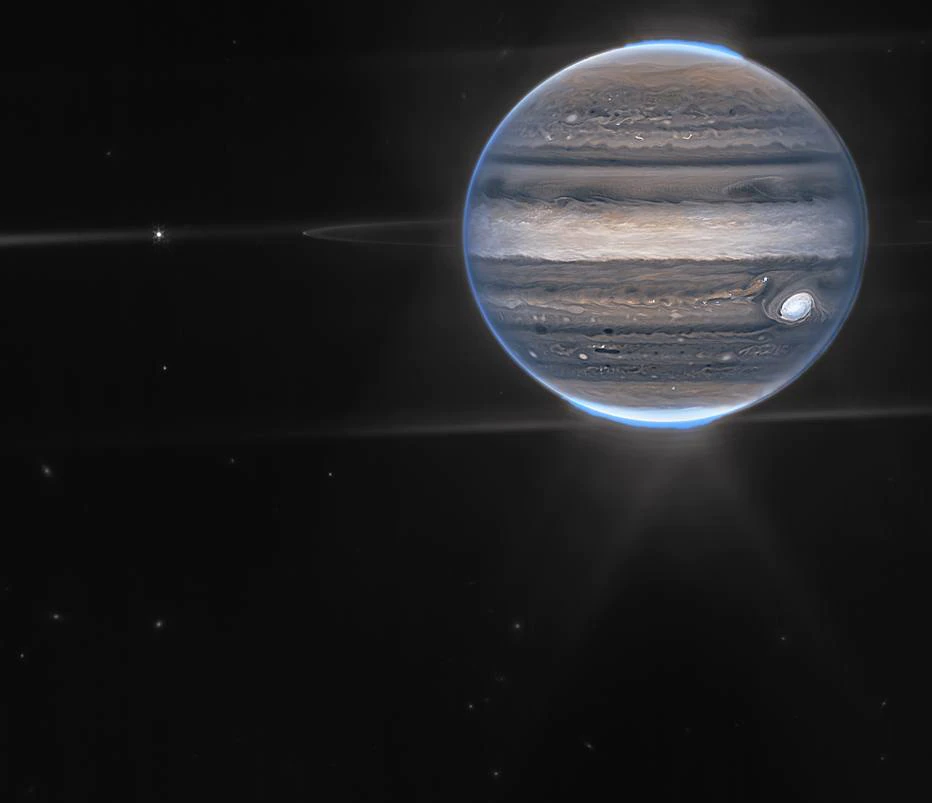a James Webb Space Telescope It provided new and incredibly accurate images of Jupiter. The images show giant storms and strong winds. They also make it possible to observe that the aurora borealis extend to high altitudes above the north and south poles of Jupiter. The records, whose quality is celebrated by NASA, provide scientific information about the planet.
These images were taken by an infrared camera, which has three infrared filters. Since infrared light is not visible to the human eye, this light has been assigned to the visible spectrum. Longer wavelengths tend to appear redder, while shorter wavelengths tend to be bluer.
In the records, it is possible to see a sandstorm called the “Great Red Spot” which, according to NASA, is so large that it “could swallow the Earth.” It appears in the photos white because it reflects a lot of sunlight.
In a note, Heidi Hamill, a scientist who leads the work of the James Webb Telescope, said the flare is a high-altitude signal, which means the spot has “high haze.” The statement also says that Jupiter’s rings are “a million times darker than the planet,” and two small moons called Amalthea and Adrastea can also be seen in the images.
The researchers have already begun to analyze the incoming data, which does not arrive on Earth in an organized package, but must be translated into images.
The James Webb Space Telescope is a joint mission of NASA and the European (ESA) and Canadian (CSA) agencies. Launched in December last year, the observatory is the largest ever sent into space and offers an unprecedented view of the universe at near and medium infrared wavelengths.
Technology has allowed the study of a variety of celestial bodies, from neighboring galaxies to the most distant regions of the universe /EFE

“Incurable thinker. Food aficionado. Subtly charming alcohol scholar. Pop culture advocate.”


![[VÍDEO] Elton John’s final show in the UK has the crowd moving](https://www.tupi.fm/wp-content/uploads/2023/06/Elton-John-1-690x600.jpg)



More Stories
What ChatGPT knows about you is scary
The return of NFT? Champions Tactics is released by Ubisoft
What does Meta want from the “blue circle AI” in WhatsApp chats?